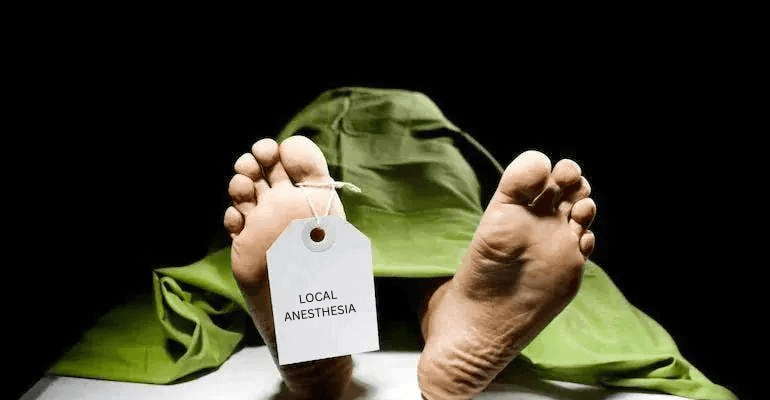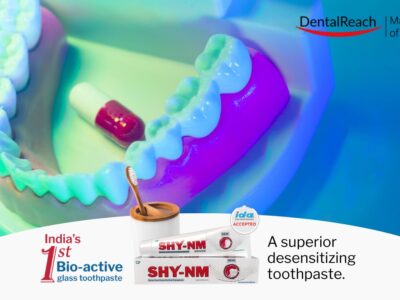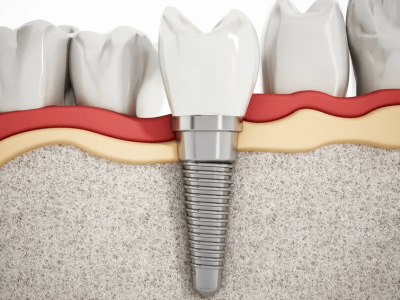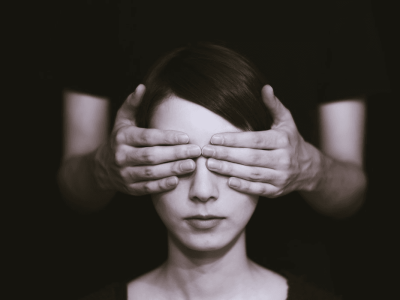Abstract
Severe allergy and anaphylaxis can result in death of the patient. Rarely, these can be caused by the local anaesthesia we regularly use in our dental practice. In this article, we shall learn in detail about the prevention and management of the fatal complications of local anesthesia i.e Allergy and Anaphylaxis.

What is the history of World Anesthesia Day?!
World Anaesthesia Day commemorates the birth of anesthesia on 16th October 1846. On this day, the first successful demonstration of diethyl ether anesthesia was done. This marks a very significant event in medical history.
At Massachusetts General Hospital in Boston, Massachusetts, on October 16, 1846, American dentist and physician William Thomas Green Morton made the first public demonstration of diethyl ether anesthesia while employing ether as an inhalational anesthetic agent to remove a jaw tumor.
A patient had surgery for the first time ever without experiencing any pain or discomfort. As a result of this medical breakthrough, general procedures are now performed worldwide using ether. Morgan, credited as the creator of modern anesthesia, demonstrated the efficacy of ether as an anesthetic gas and emphasized the importance of administering the correct dose of anesthesia for safe practice.
Access is still an issue!
Despite the numerous advancements that have occurred since the first anesthetic surgery about 170 years ago, there are approximately 5 billion people who still do not have access to safe anesthetic procedures.
World Anaesthetic Day and other international awareness campaigns can be effective campaigning tools to mobilize political will, inform the public, and reinforce the accomplishments of the international anesthesia community in the face of this ongoing neglect.
All about anesthesia in dentistry!
Anesthetic agents work by reversibly binding to sodium channels, preventing the entry of sodium into the cells and thereby inhibiting the propagation of nerve impulses. As a result, nociceptive impulses connected to painful stimuli are prevented from reaching the brain, and the patient is unable to feel pain.
In dentistry, a local anesthetic(LA) can be administered as block anesthesia or infiltration anesthesia. In general, block anesthesia is typically utilized in the mandible while infiltration anesthesia is frequently used in the maxilla. When infiltration and block approaches have failed to provide profound anesthesia, there are further local anesthetic techniques that can be used like intraligamentary, intraosseous, intrapulpal, and interseptal anesthesia.
Deadly complications of LA and their management
Emergency situations that pose a threat to life can and do arise in the practice of dentistry. Such accidents may occur more frequently due to a variety of causes. These include the following:
- a rise in the number of senior citizens seeking dental care;
- therapeutic developments in the medical and pharmaceutical fields;
- an increase in the duration of dental appointments; and
- a rise in the usage and administration of medications in dentistry.
Fortunately, additional considerations limit the emergence of potentially fatal circumstances. These include a review of each patient's physical condition prior to treatment, which includes a medical history questionnaire, a talk about their health, a physical exam, and a little modification of treatment protocol as per the patient.
In 1963 the American Society of Anesthesiologists adopted what is now referred to as the ASA Physical Status Classification System. The classification represents a method by which the doctor can estimate the medical risk to a patient who is scheduled to receive “anesthesia” for a surgical procedure. The classifications are defined by the ASA as follows:
- ASA 1: A normal, healthy patient without systemic disease
- ASA 2: A patient with mild systemic disease
- ASA 3: A patient with severe systemic disease
- ASA 4: A patient with an incapacitating systemic disease that is a constant threat to life
- ASA 5: A moribund patient not expected to survive without the operation
- ASA 6: A declared brain-dead patient whose organs are being removed for donor purposes
- ASA E: Emergency operation of any variety, with E preceding the number to indicate the patient’s physical status (for example, ASA E-3)

There are many complications associated with the administration of local anesthetics in dentistry which include:
Systemic complications
- Psychogenic reactions
- Hypersensitivity
- Allergy
- Overdosage
- Ophthalmologic complications
- Toxicity
- Methemoglobinemia
Local complications
- Hematoma
- Trismus
- Paresthesia
- Neuralgia
- Infection
- Edema
- Soft tissue injury
- Lack of effect
In this article, we shall learn in detail about the prevention and management of one of the fatal complications of local anesthesia i.e Allergy and Anaphylaxis.
What is an allergic reaction?
A case was reported on 24th September 2022 in the leading daily newspaper The Times of India, Chandigarh regarding the death of a patient after extraction, due to LA allergy.

http://timesofindia.indiatimes.com/articleshow/94409051.cms?utm_source=contentofinterest&utm_medium=text&utm_campaign=cppst
The term "allergy" refers to hypersensitive reactions that are brought on by immunological mechanisms that have been strengthened by repeated exposure to an allergen.
Local anesthetics from the amide category rarely cause allergic responses. Local anesthetics of the ester-type cause more allergic reactions than those of the amide-type. As a result, amide-type anesthetics are widely employed, with lidocaine being the most popular choice for epinephrine-involving dental anesthetics. Preservatives like methyl-p-hydroxybenzoate, antioxidants like bisulfate, antiseptics like chlorhexidine, vasoconstrictor like sulfites, and other antigens like latex can all cause adverse effects on the administration of a local anesthetic.
Symptoms
Allergic reactions may include mild symptoms such as urticaria, erythema, and intense itching, as well as severe reactions in the form of angioedema and/or respiratory distress.
Management
The elimination of the triggering agent should be the first step in treating an allergic reaction.
- Oral or intramuscular administration of antihistamine-diphenhydramine, 25 or 50 mg, is recommended for the treatment of mild symptoms.
- Hydrocortisone cream may be given to treat erythema or reduce skin itchiness.
- Basic life support, 0.3-0.5 mg of intramuscular or subcutaneous epinephrine, and hospitalization should be done in life-threatening situations.
What is an anaphylactic reaction?
A case was reported in Korea in 2019, published in the Journal of Dental Anesthesia & Pain Medicine, where an 86-year-old woman experienced an anaphylactic reaction 30 minutes after LA administration for extraction. Timely management saved her minutes away from death.

Anaphylaxis is a severe, potentially life-threatening generalised allergic reaction characterised by rapidly developing symptoms and signs including skin changes (such as redness and itching), mucosal changes (swelling below the skin surface), swallowing and breathing difficulties (due to swollen mouth, throat or tongue), wheezing, tachypnoea, tachycardia and hypotension.
Symptoms
Anaphylaxis is characterised by quick onset and rapid deterioration of symptoms mentioned above which includes;
- Fatal symptoms with sudden onset and quick progression
- Life-threatening issues with the lungs, the heart, or the blood circulation
- Mucosal and/or skin alterations (flushing, urticaria, angioedema)
Management
The most vital drug for anaphylaxis is adrenaline, but it must be given quickly for it to work. Adrenaline administration delays raise the mortality risk. The most frequent cause of anaphylaxis-related death is failure to administer adrenaline.
The recommended doses of adrenaline are as follows:
- Adults: 500 μgs IM (0.5 ml of 1:1,000)
- Child >12 years: 500 μgs IM (0.5 mL)
- Child 6-12 years: 300 μgs IM (0.3 ml of 1:1,000)
- Child <6 years: 150 μgs IM (0.15 ml of 1:1,000).
The dose can be repeated at five-minute intervals until there has been an adequate response.
Conclusion
Allergies and anaphylactic reactions to lidocaine are rarely observed in clinical use. Since it is rare and little is known on reactions to lidocaine by clinicians, it may not be recognized when it occurs. A little knowledge and quick action can potentially save a life in a dental office emergency.
References
- Malamed S. Handbook of local anesthesia, 2013. Elsevier, 6th ed.
- Chandigarh: ‘One in million’ allergic reaction proved deadly. http://timesofindia.indiatimes.com/articleshow/94409051.cms?utm_source=contentofinterest&utm_medium=text&utm_campaign=cppst
- Kim H, Lee JM, Seo KS, Kwon SM, Row HS. Anaphylactic reaction after local lidocaine infiltration for retraction of retained teeth. J Dent Anesth Pain Med. 2019 Jun;19(3):175-180.




















Comments